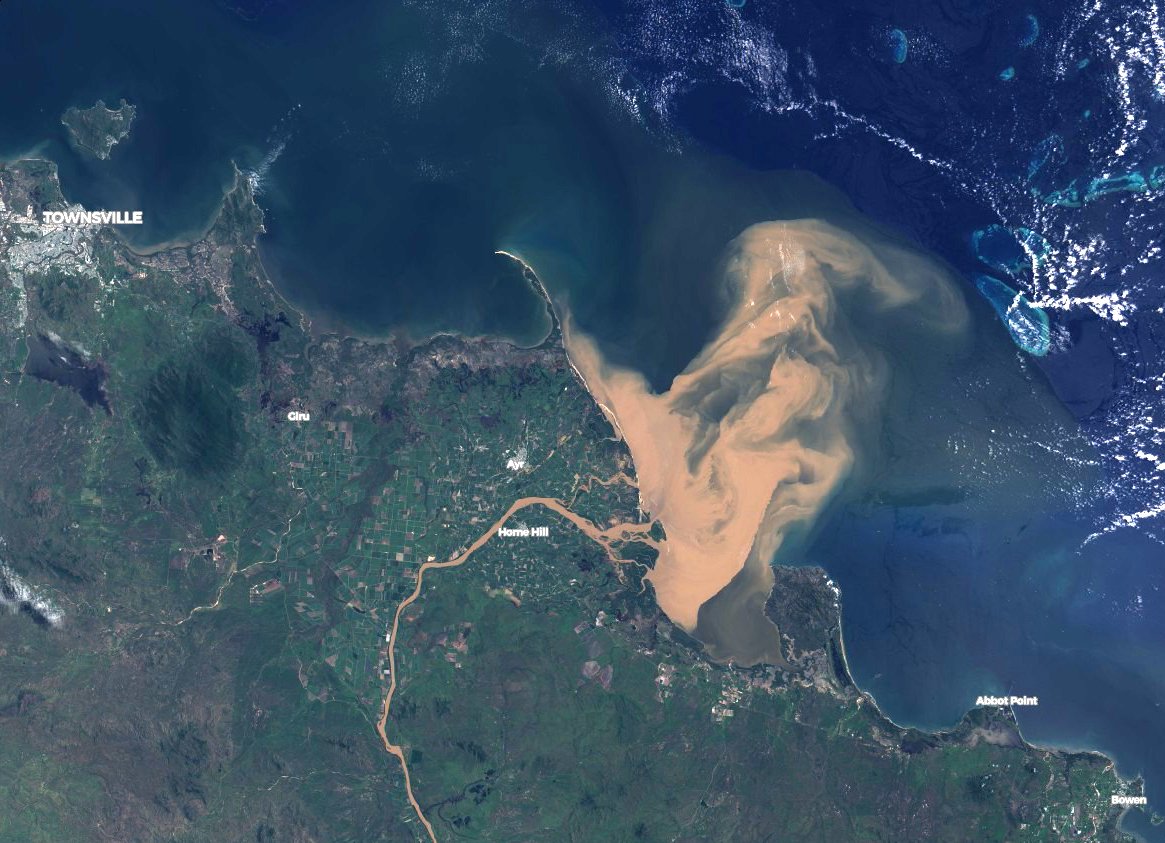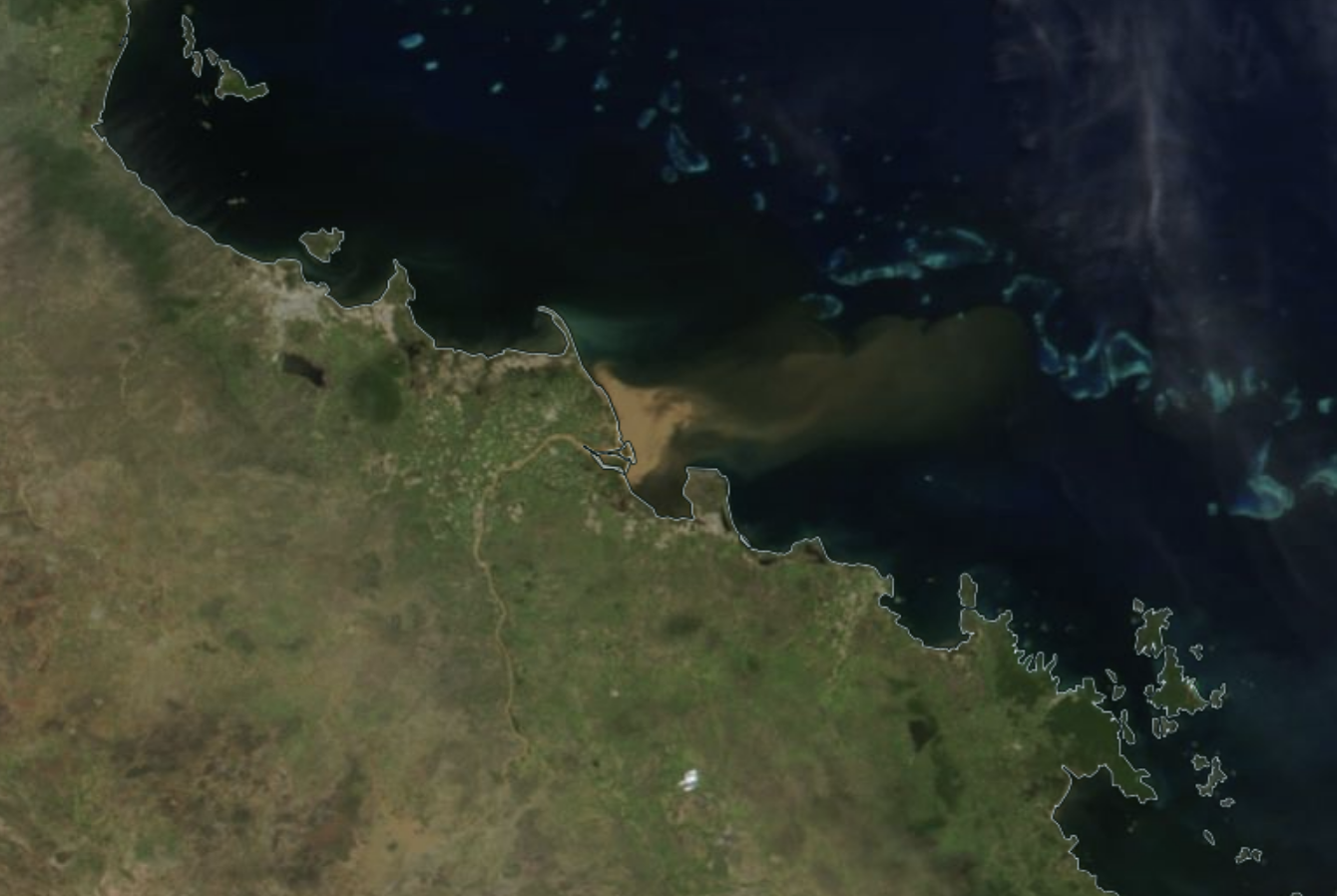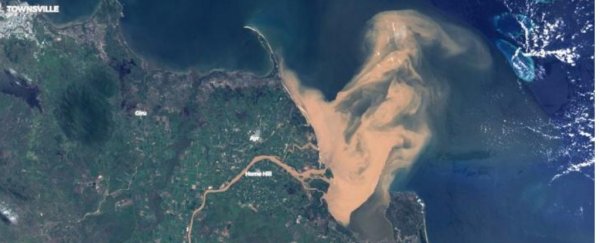The Great Barrier Reef just can't catch a break. Year after year, this global treasure has been battered by cyclones and beaten by bleaching events. Now, with little time to recover, a part of the reef is being kicked while its down.
An exceptional year of rainfall in Queensland, Australia has caused a huge flood of polluted runoff to rush out to sea, straight towards the reef.
Satellite images show the muddy waters stretching from the swollen rivers of the Whitsundays to Cape Tribulation.
 (NASA)
(NASA)
For the nearest reefs, some 60 kilometres away from shore, the floodwater has already arrived, possibly shielding the sun and smothering the life below.
The biggest fear, according to the ABC, is that the muddy waters contain common farming chemicals, like nitrogen or phosphorous, because these could kill off the nearby coral and seagrass.
The longer the murky cloud sits there, the more damage it could do, and without strong winds, the plume of polluted water may take a while to move on.
Smothering life: Runoff from recent floods in Australia is flowing onto parts of the Great Barrier Reef starving coral of light https://t.co/Dv4iR5Awsg
— AFP News Agency (@AFP) February 15, 2019
📷 Matt Curnock / TropWATERJCU pic.twitter.com/K76GOzq0i7
Right now, it's not clear if or how the runoff has impacted the reef, but there's not a lot more we can afford to lose.
Back in 2016, 93 percent of the reef was reported to be bleached due to unseasonably warm weather, with 50 percent listed as dead or dying, and some think it can no longer be saved.
 (NASA)
(NASA)
But there may be an upside to all of this. If the rivers transport cold water out to sea and if the clouds continue to block out the sun, this might be enough to cool down some underwater heatwaves headed for the region in the coming weeks.
"If you want to have a flipside to the story that would be one, yes," marine scientists Frederieke Kroon told the ABC, "but it's still a huge disturbance to the reef [after] the bleaching and the cyclones that we've had over the last couple of years."
